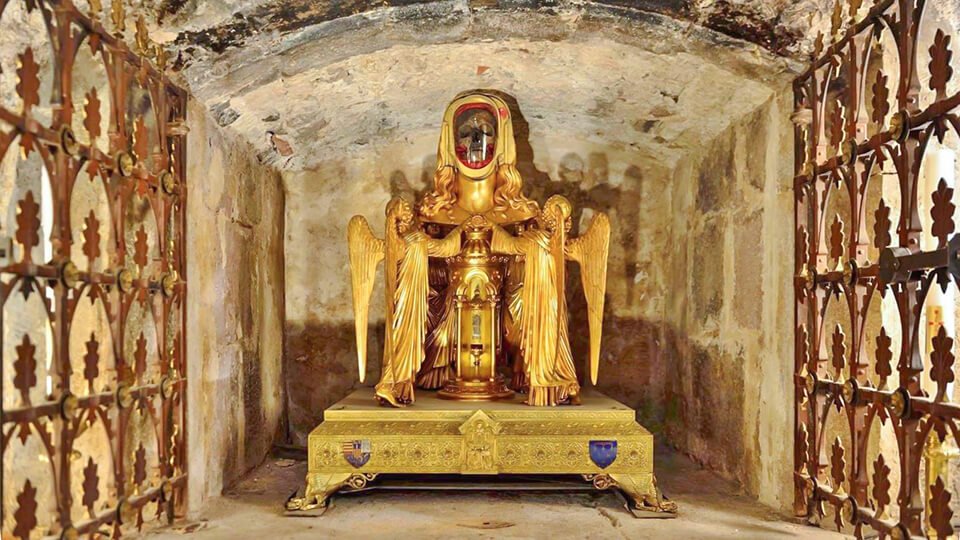Part I: What you might not know about Simon Magus
Copyright 2021 by Joan Berry
INTRODUCTION
Most of you who come to my page and/or read my books know that I love the Bible, especially the history and spiritual combined. I like to know what was going on at the time that its books were written. It opens the door to much knowledge and better standing of the Scriptures. Sometimes the account of an event is not pretty, but we can learn a lesson from it. The upcoming series deals with an evil man who created a counterfeit church that competes with the true church to this day. The man is Simon Magus, a pagan priest, magician, and sorcerer from Samaria who professed to be a Christian but was not. I am writing the series in the narrative style with sources listed at the end because I believe it makes for smoother reading. My sources are from a variety of Bibles that recorded the events I am writing about; ancient accounts from the historians of that era and beyond; commentaries; and the numerous books listed on the Sources page.
Part I
Babylon was ideally situated as a port on the Euphrates River and was the capital of Mesopotamia. It was one of the largest cities in the world. Babylonians conquered Samaria and forcibly removed a large number of its populace to Babylon as prisoners of war. Eventually, the Samaritans were transferred to northern Israel and adjoining countries. Although the Samaritans were freed from Babylon, they brought their pagan religions with them and combined them with Old Testament Jewish traditions. The Jews were unaccepting of this pairing of religions and considered the Samaritans to be opportunists due to their wishy-washy behavior of pretending to be Jewish when times were good and reverting to being Samaritans when times were not good. Among the Samaritans was the pagan priest and sorcerer Simon Magus, who had a great following in Samaria. He decided he would increase his powers as a sorcerer by combining his idol-worshipping religions with some of the Christian teachings in addition to using demonic powers to perform astonishing miracles for his followers. As Christianity spread through the preaching of the Good News, Simon Magus saw an opportunity to extend his counterfeit religion.
Following the Pentecost (after the resurrection), when the Holy Spirit descended upon the believers in Christ and bestowed special spiritual gifts, Simon was fascinated by the laying-on-of-hands for healing and other miracles. He believed that because he was important in Samaria and worshipped as a living god, he deserved having the apostles’ powers. The custom of buying and selling demonic powers was not uncommon among sorcerers. He thought the apostles would buy and sell powers, too. Furthermore, he not only wanted the spiritual gifts but wanted to become an apostle.
Simon Magus waited until Simon Peter and John arrived in Samaria before he attempted to buy the Christians’ spiritual gifts. The offer was refused with a strong rebuke from Peter who called Simon Magus out as a pagan idol worshiper and not qualified to be an apostle. [Jesus Christ gave the commissions to his apostles who in turn called upon the Lord to help choose Mathis by lot to replace Judas. Not only that requirement, but an apostle had to be a witness to seeing Christ after His resurrection].
Peter’s rebuke also carried a prophecy about Simon Magus: When Peter said that Simon Magus would be the gall of bitterness, he was telling Simon that he would be held responsible for introducing paganism and its idols into Christianity (See Deut. 29: 16-18; Acts 8). Simon convinced Phillip that he wanted to be baptized as a Christian and Phillip complied. Simon never repented as well as being dishonest about his baptism – it was just a way of gaining membership into the True Church. By 62 CE when Luke wrote the Acts, the entire populace of Samaria had been taught that Simon was truly a Christian and the head of the only true Christians and the apostle to the gentiles. In apocryphal writings, it is written that he is known for his great sorcery, but a corrupt Samaritan.
According to Britannica, “Simon Magus lived during the first century CE. He professed to be a Christian who offered to pay for supernatural powers and transmuting the Holy Spirit. This gave rise to the term ‘Simony’ as the buying and selling sacred or ecclesiastical office. In some early Christian writings, he is identified as the father of post-Christian Gnosticism, a dualistic religious sect advocating salvation through secret knowledge and the archetype heretic of the Christian Church.”
* * *
Copyright 2021 By Joan Berry
Note: Because I am writing a synopsis (summary), you may want to read the starred * reference below. It is the best account on this topic I could find. Very detailed – 58 pages.
Part II of this series to come.
Sources:
A Historical and Spiritual View of the Seven Churches of the Revelation of Jesus Christ. (2019). Berry, J. ISBN 978-1-79472-2.
Bebe’s Ecclesiastical History of the English Nation. (731). Bebe, priest and, historian. England.
Berry, V. J. (2016). Why Historical Phenomena Instigates Resistance to Female Clergy. ISBN 978-1-365-40463-4. Berry, J. The Original Love, Learn and Live in Christ. Joan-berry.com
Bible Gateway.com (n.d.). https://w.w.w.biblegateway.com
Carriere, J. (1977). The Gnostics. E. P. Dutton. New York; NY; Peter Owen Pub.2014.
Cave, W. (1840). The Lives of the Apostles…London, Eng. Oxford by J. Vincent.
Britannica, T. Editors of Encyclopaedia (2020, May 6). Simon Magus. Encyclopedia Britannica. https://www.britannica.com/biography/Simon-Magus
Duck, Daymond R. (1998). Revelation: God’s Word for the Biblical Inept. Lancaster PA. Starburst Publishers.
Fletcher, I. V. (1984). The Incredible History of God’s Church . . . Altadena CA. Triumph Publishing Co.
Holy Bible From the Ancient Eastern Text. (1957). Lamsa, George M. Trans,). From the Aramaic of the Peshitta. Harper, San Francisco.
Hunt, D. (1994). A Woman Rides the Beast. Eugene OR: Harvest House Pub.
Jameson, A. (1857). Sacred and Legendary Art. London Eng.: Longman, Brown, Green Pub.
Josephus: The Complete Works. (1998). Whiston, William, Trans.). Nashville TN. Thomas Nelson Publishers.
Life Application New Testament Commentary. (2011). Barton, Bruce et al. Wheaton IL. Tyndale Publishers
Lujack, G. (n.d.). Simon Magus: Catholicism’s First Pope. catholicism’s-first-pope-1544884.pdf
Martin, E. L. & Keyser, J.D. Simon Magus and the origin of the Catholic Church (n.d.). w.w.w.hope-of-isreal.org
McGraph, Alister. (2011). Christian Theology 5th ed. Kings College. London UK. Wiley-Blackwell Publishers.
New King James Study Bible. (2007). Radmacher, Earl D. general editor. Nashville TN. Harper.
Newman, D. (1685). The Lives and Deaths of the Holy Apostles. Ann Arbor MI, London Eng.; University of Michigan microfilm.
Olson, G. (1986). The Apostasy of the Last Century. Nordica S. F. Ltd. Hong Kong, China.
Rome into 10 Parts; Divisions of the West. (2014). Amazing Bible Timelines with World History. https://amazingbibletimelinewith world history.com
The Amplified Bible. (1987). Grand Rapids MI. Zondervan House publishers.
The Apologetics Study Bible: Cristian Standard Bible. (2017). Cabal, Ted, general editor. Nashville TN. Holman Bible Publishers.
The Christian Theology Reader 4th ed. (2011). McGrath, Alister, ed. Kings College, London UK. Wiley-Blackwell.
Walsh, J. E. (2013). The Bones of St. Peter. Manchester NH. Sophia Institute Press
Bible references:
Acts 8: 9-21; 1: 23-26
II Thess. 2: 7
Matt. 10: 5-6
John 4: 9, 12
Rev. 2: 9; 3: 9; 2: 2; 2:20; 17; 18
I Kings 16: 31 Jezebel
I Kings 12: 28-30
II Kings 17: 24-41
II Chron. 11: 14
Num. 23; 22: 4-5 Peter temple
Deut. 23: 4

